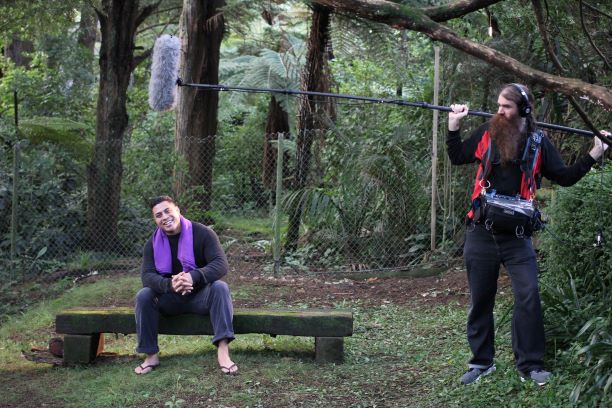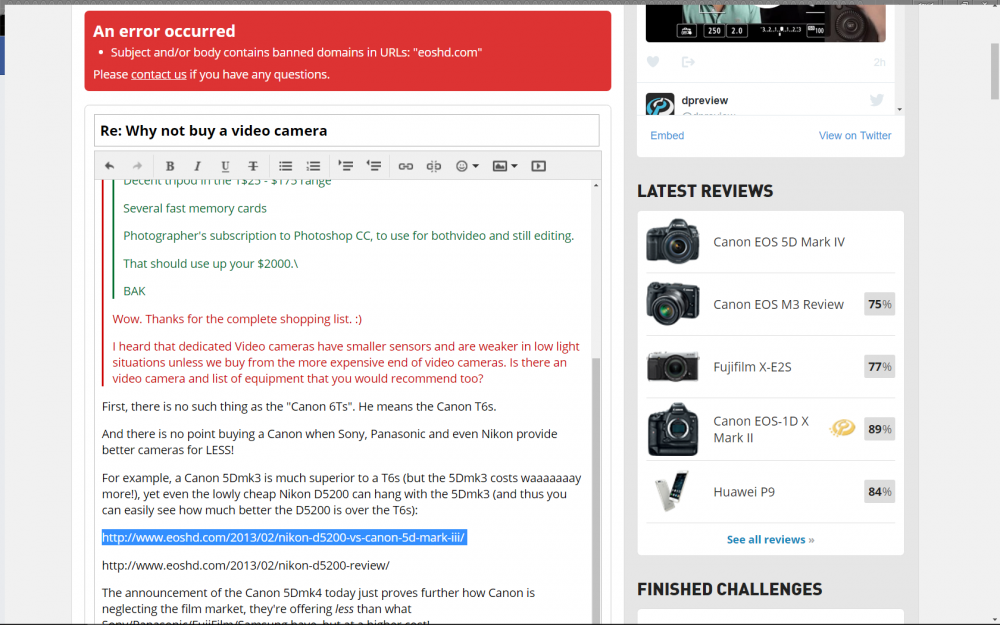-
Posts
9,514 -
Joined
-
Last visited
Content Type
Profiles
Forums
Articles
Everything posted by IronFilm
-
Wouldn't be a bad thing if EOSHD had a few guest posts, it would also mean the main page gets updated more often. And even if Andrew Reid was only writing a few short paragraphs, I'm sure most of us here would welcome a guest post from Andrew! I know I would on my humble little blog.
-
Welcome, glad to see another D750 fan here! A friend of mine got one of these recently as his first DSLR. And I've got wedding photographer friends who use them too. As a Nikon shooter myself (D50 => D90 => D5200 , chose the D5200 thanks to EOSHD!) I am tempted by the D750 indeed, especially as it has experienced a big price drop lately. (just need to save up that $$$$ 1st!)
-
I thought that was just temporary?
-
How do they spend money against you?!?!
-
-
Newshooter had a hands on play with it: http://www.newsshooter.com/2016/08/25/hands-on-preview-canon-5d-mkiv-has-4k-internal-recording-with-a-1-74x-crop/ ML is possible with CF and SD, don't know what you mean?? Probably wouldn't get 4K raw without CFast though.
-
Newshooter had a hands on play with it: http://www.newsshooter.com/2016/08/25/hands-on-preview-canon-5d-mkiv-has-4k-internal-recording-with-a-1-74x-crop/
-
By the time ML team have got something out, polished, stable, and tested for the 5Dmk4 then Sony will be onto the a7S mk4!
-
HDR doesn't work with 4K, only 1080. I'd want to see this up against a BMPCC, maybe it is merely only doing catch up at best and is not gaining ahead in any way. Plus what downsides does doing HDR video have? That is another unknown.
-
What the hell! Canon is baffling. Canon, go home! You're drunk.
-
I wonder if the different crop sizes quoted is because of UHD vs DCI
-
I wonder if the different crop sizes quoted is because of UHD vs DCI
-
Perfect reaction.
-
You can count on Canon to bring to the table.... the lolz!
-
G80 will likely be the G7 plus the good new bits from the GX80.
-

Photokina 2016 preview and summary of the year in video so far
IronFilm replied to Andrew - EOSHD's topic in Cameras
A D750 with 4K and no crop would be dreamy. Dreamy dreamy would be 4K DCI 60fps Dreamy dreamy dreamy would be 10bit 422 -

Photokina 2016 preview and summary of the year in video so far
IronFilm replied to Andrew - EOSHD's topic in Cameras
All the rumors are Panasonic will announce the G80 and not the GH5 first . -
People think the D500 is just for sports/birds, but it also has been argued the D500 is the best ever general purpose (especially for DX) camera Nikon has ever made. I want one!!! I don't even shoot birds or sports (well... I photographed a rugby match the other weekend just for a laugh).
-
What was it for? C300 mk1 vs a7S mk2 fit very different niches. LOL! Bet that was hard and took you ages on a long travel all over the internet before you found that ;-)
-
Yet another price drop.... ! $1,599.95 now. Maybe a new permanent low is coming after all. This should significantly push down the secondhand prices as well! Would like to get a D750 myself for real estate photography. http://nikonrumors.com/2016/08/23/new-100-price-drop-on-refurbished-nikon-d750-cameras.aspx/
-
Wow, that is a lot cheaper tham B&H!
-
The price drop was such an extremely short term thing, it might mean something.... or it could just be a red herring, that we should not read anything into. The Nikon D600 series however is even more due for an update! As the D600 is much older than the D750 (and the D610 is such an extremely tiny update of the D600, it just was to get rid of the D600 name stigma). But I wouldn't be too surprise if they update the D750, drop the original D750 price even further, discontinue the D610 and have it replaced with a price slashed D750.
-
This thread reminds me I need to catch up on (read: binge on) "You're the Worst".
-

4K RAW 120fps for £3k?! Say hello to the second-hand Canon C500
IronFilm replied to Andrew - EOSHD's topic in Cameras
Wow, just wow, such a contrast between an expensive camera and a cheap microphone!



